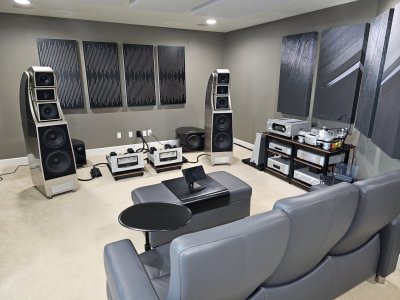Hello folks,
I have long been curious to try out preamplifiers in my system. Have heard some of preamplifier build by our FM and they were fabulous and a definite improvement in the existing sound quality. However I have certain queries which I wish to put forth for the forum to respond
1) are preamplifier with Balanced input same as inherently balanced preamplifier. That is to say any preamplifier which accepts a balanced input will have to be a balanced design ???
2) What if the chain from DAC to preamplifier is balanced, but the chain from Preamplifier to Speaker is SE, do you loose whatever, if any advantages that you may got in the previous transmission of signal uptill preamp.
3) Are balanced devices/transmission only relevant for suppressing noise, or is there any other benefits (either device specific or in general)
Regards
I have long been curious to try out preamplifiers in my system. Have heard some of preamplifier build by our FM and they were fabulous and a definite improvement in the existing sound quality. However I have certain queries which I wish to put forth for the forum to respond
1) are preamplifier with Balanced input same as inherently balanced preamplifier. That is to say any preamplifier which accepts a balanced input will have to be a balanced design ???
2) What if the chain from DAC to preamplifier is balanced, but the chain from Preamplifier to Speaker is SE, do you loose whatever, if any advantages that you may got in the previous transmission of signal uptill preamp.
3) Are balanced devices/transmission only relevant for suppressing noise, or is there any other benefits (either device specific or in general)
Regards


